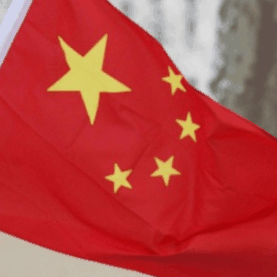
Cross-posted from The Conversation
In recent months, talk of an emerging crisis in China’s financial sector has been getting louder. A few weeks ago such chatter reached a crescendo, at least in terms of a narrative, when two Nomura economists argued that China was looking increasingly like the US on the eve of the sub-prime mortgage meltdown. And we all know how that ended.
China’s financial crisis, the Nomura economists contended, is rooted in the massive amount of credit that is extended off the balance sheets of banks. This credit takes two forms. Firstly, banks can move funds off their balance sheets by contracting with less regulated financial vehicles, such as trust companies. Secondly, informal credit markets, such as when a property developer raises funds through networks of friends and acquaintances promising a generous return in the future.
To the extent that off-balance sheet lending is opaque, nervousness on the part of investors and other interested onlookers is easily understood. If, as the story goes, a significant proportion of such lending is simply fuelling speculative activities, such as in the real estate sector for example, then a downturn in general economic conditions could quickly see the Ponzi scheme come crashing down.
To date, much commentary has been devoted to assessing the extent to which China’s banks are exposed to such potentially risky activities, or the ability of China’s central government to recapitalise them in the face of such an event.
A perspective that has been missing, however, is the basic point that off-balance sheet activity is not necessarily a bad thing. In a country such as China, in net terms it can be a distinct positive.
There is a very good reason why financial activity off the balance sheets of banks is more extensive in China than it is in Australia: the banking system in China performs its core tasks poorly.
Consider the predicament for savers. Interest rates in China are set by the State Council and the one year time deposit rate currently sits at 3.25%. Meanwhile, inflation is officially at 3.2%, and it is widely regarded that China’s CPI underestimates price increases for many items, particularly big-ticket items such as housing.
On the lending side, the picture is no better. As they have done for the past three decades, China’s banks continue to lend to state-owned enterprises in gross disproportion to their importance in total output. That is, the banks channel the savings of the household sector to the least efficient firms, while the private sector, which has been responsible for most of China’s growth, is starved of funding.
To the extent that off-balance sheet activity is motivated by, and acts to alleviate the detrimental effects of such perverse practices, it ought to be viewed as a positive, not a negative.
Put another way, the grey financial system that many presently find so concerning and in need of reigning in is the same financial system that has been responsible for fuelling much of China’s growth to date. Curtail it, and it may be found that the cure is worse than the disease.
That said, there are sound reasons for preferring a greater proportion of financial activity to be conducted on the balance sheets of banks. For example, when private sector borrowers are forced into informal credit markets to raise funds, the interest rates charged can be exorbitant. Likewise, investors can lack even basic protections in the event of default.
With this in mind, even if a significant proportion of off-balance sheet lending does turn bad, a number of positive outcomes will likely result.
Most importantly, such an event would provide much needed impetus for an accelerated pace of reform in the banking sector. After a flurry of reforms following WTO entry in 2001, the pace of reform in China’s banking sector has slowed to a snail’s pace.
If the authorities wish for a greater proportion of financial activity to occur on the balance sheet of banks, then they will have no choice but to liberalise interest rates and offers savers a better rate of return, and cease the practice of state-owned banks discriminating against private sector firms in their lending decisions. By boosting household income, interest rate reform would also help in achieving other key policy objectives, such as engineering the switch to a more sustainable growth model driven by domestic consumption.
It has also been reported that local governments have been amongst the most active borrowers in China’s grey financial markets. This is not surprising given that in China’s fiscal mix, local governments are responsible for the bulk of expenditure obligations (education, health, social security, etc), while at the same time lacking sustainable revenues sources. Thus, any reforms implemented in response to financial fragility will need to extend beyond the banking system if they are to be effective.
To be sure, a financial crisis in China would not be good news for Australia or the global economy in the short term. But off-balance sheet lending in China is not the new or scary beast it has recently been portrayed to be. And while any financial crisis would necessarily involve temporary pain, if the end result was reforms along the lines of those mentioned above, then China’s long-run growth prospects will be enhanced, and that is very much a positive development.
Article by James Laurenceson, Senior Lecturer, School of Economics at University of Queensland

